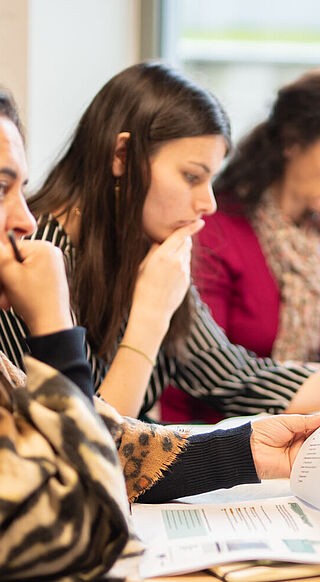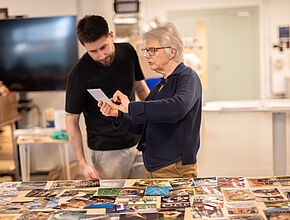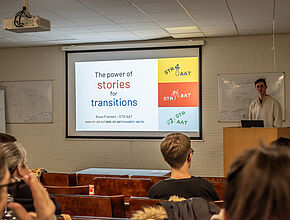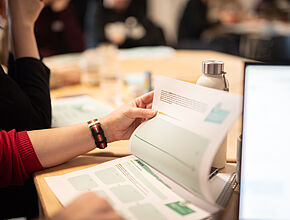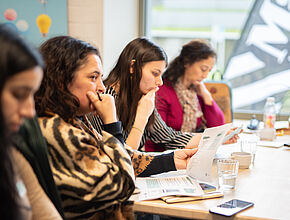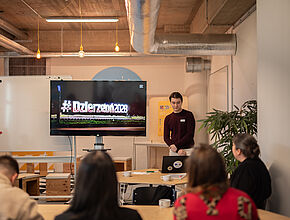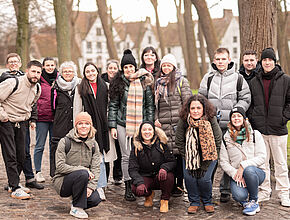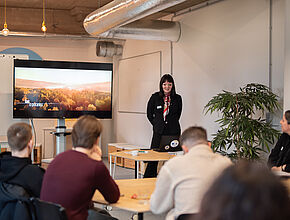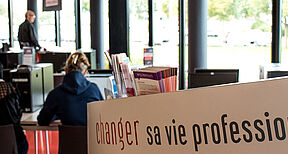The European project Place aux jeunes or Streets for the Youth
Mise à jour le
Let's listen to young People to prepare our Cities of 2050 !
The ‘Place aux jeunes’ project aims to involve young people from 4 European countries (Portugal, France and Poland) in building the city of tomorrow. A city that is adaptable, welcoming and resilient, and that meets different users needs.
The project will encourage links between young people aged 15 to 20, professionals and local councillors from 8 European cities, to listen to what young people have to say about how they see their city today and in the future. The young people's visions will be compared and confronted within the partnership via social networks and meetings.
The project will make it possible to develop and test techniques for involving young people in concrete public space development projects carried out by the participating municipalities in 2025 and 2026.
The project was submitted to the ERASMUS+ Youth programme on 1 March 2024. Activities began in November 2024 and will end in June 2027.
The European ERASMUS + Youth Programme is granting 120,000 euros to the 4 partners to carry out their activities.
Project partners
Partners want to exchange, develop and test techniques to involve young people in the planning of tomorrow’s town and cities. Partners are :
Saint-Brieuc Armor Agglomération (SBAA): this local authorities represents 32 communes. SBAA works on a daily basis to revitalise town centres and is also committed to developing an attractive offer and living environment for young people.
Building on this work, SBAA has approached European partners to learn from the practices and expertise of other local authorities in Europe in these areas.
CIM Cavàdo, Portugal:
A community of 6 municipalities with extensive experience of involving young people, who are keen to work with young people from the town of Vila Verde in northern Portugal on this project.
Association of Polish Municipalities in the Baltic EuroRegion, a network of 31 municipalities working together. Polish towns have extensive experience of involving young people in local democracy, particularly through their youth councils and the European cooperation projects they run. 3 towns are actively participating in the project: Gdynia, Elblag and Dzierzgon.
Vital cities: this research group, which advises municipalities on the development of public spaces in Belgium, will train project partners and support them throughout the project.
See map of municipalities involved.
The action plan :
- local activities carried out with groups of young people in the 8 municipalities to understand their vision of their towns and their needs for the public spaces of their towns
- local activities connecting groups of young people and planning professionals from the local authorities to discuss the making of the city and youth needs.
- discussions at EU level amongst the 8 groups of young people about their visions
- 4 European workshops gathering ambassadors of the 8 groups of young people and planning professionals to share practices and methods.
- 3 training sessions in France, Portugal and Poland on how to get young people’s views on planning projects
- Local workshops to test the participation tools identified on a selection of urban project
Project deliverables
- A methodological handbook to involving young people in the design of public spaces
- A set of productions by young Europeans and youth organisations on their vision of their city in 2050
- A documentary on the implementation of this ERASMUS + "Place aux jeunes" project produced by young people involved in it.
… and a change of practice in designing public spaces in the 8 municipalities involved and far beyond.
Dans la même rubrique


The European Commission's support for the production of this publication does not constitute an endorsement of its contents, which reflect the views only of the authors. The Commission cannot be held responsible for any use which may be made of the information contained therein.
